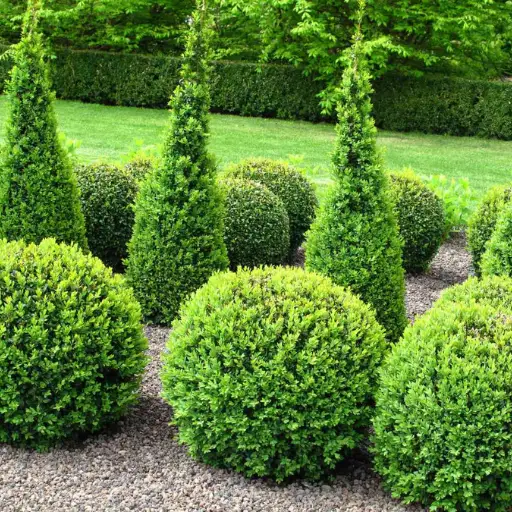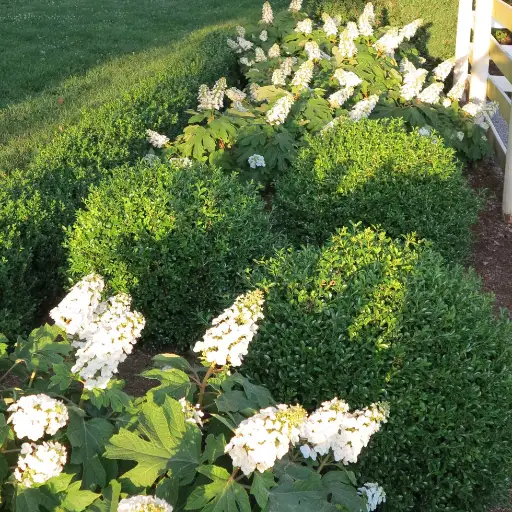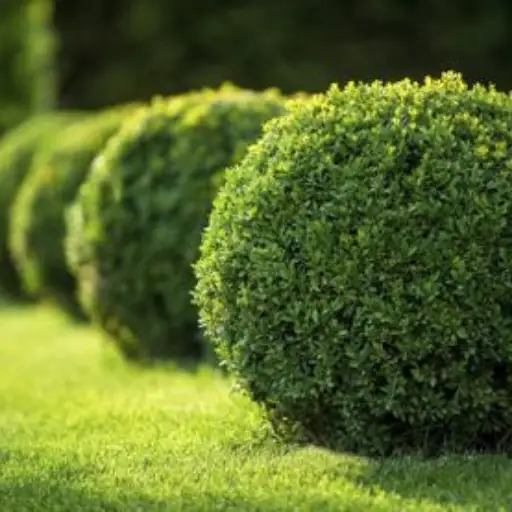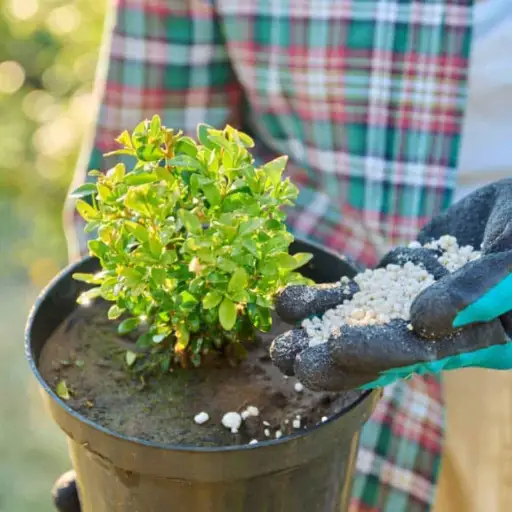Cultivating boxwoods to attain vibrant and healthy growth requires a keen understanding of their nutritional needs and a strategic fertilization approach. These popular evergreens, cherished for their dense foliage and versatility in landscaping, respond well to specific care and maintenance practices. This article delves into the essentials of fertilizing boxwoods, guiding gardeners on how to provide the right nutrients at optimal times. By exploring vital tips and techniques, readers can ensure their boxwoods remain lush and thriving throughout the seasons, enhancing the beauty of outdoor spaces. Whether you’re an experienced horticulturist or a home gardening enthusiast, these insights will equip you with the knowledge to foster robust boxwood health.
What is the Best Fertilizer for Boxwoods?

The Nutritional Requirements Of Boxwood Shrubs
It has been observed that boxwood shrubs respond positively to the application of fertilizers containing the three essential plant macronutrients nitrogen, phosphorus, and potassium (N-P-K). This can be derived from a complete N-P-K contain with ratio figures such as – 10 10 10. Nitrogen is essential in chlorophyll production for healthy leaf development, phosphorus is important for root growth and maturity, and potassium supports the general health of the whole plant. Also sometimes, for example, if the soil is too sandy or too acidic, boxwoods may need extra magnesium and calcium which have to be added in the form of additional soil additives or fertilizers for acid-loving plants. Fertilizing in early spring allows nutrients to be available during crucial periods of development when the new growth has not yet matured. This allows strong and attractive boxwoods to grow all season long and up to the next season.
Choosing Between Granular and Organic Plant Food
When deciding between using granular or organic plant food for your boxwoods, understanding the merits and distinctions of both is recommended. Granular fertilizers can be quite handy in that they provide nutrients over a more extended period which increases plant nutrition coverage. They are also rather simple and effective to use because they are used as a preventive measure when achieving steady growth during planting is the objective. But organic plant foods increase soil health by allowing more microbial and soil structural activity. They are mostly of natural origin and can be helpful for individuals who are looking for a more eco-friendly option, or who are in poor soil. In the end, it comes down to the particular goals of your gardening, your inclination towards organic gardening and the current state of your soil. Both techniques can yield some results, but knowing the requirements of your boxwoods and your own gardening philosophy will help you pick the right fertilizer.
Stepwise Procedure for Performing Soil Test for Boxwood Fertilization
Start by identifying the areas where boxwoods are planted, as this is where you will need to take representative soil samples in order to perform a soil test for boxwoods fertilization. It is best to use a spade or trowel that is clean when digging the soil from a depth between 6 to 8 inches, so as to get soil from a number of spots which would be collected in a mixture and then cleaned. Place the mixed sample in a clean container. Then, you should submit your sample to a qualified laboratory for further assessment. A reliable soil testing facility will issue a report that includes soil texture, pH, and nutrients available within the specimen. From these results, particulars of the type and amount of fertilizer for each boxwood are worked out so that the soil will be restored in such a way that productive growth of the plant is possible.
When Should You Fertilize Boxwoods?
Best Spring Season for Fertilizing Boxwood
Fertilization of boxwoods is best done at the beginning of the spring season, when fresh buds are just coming out. This allows the plants to access the essential nutrients required during the growing period. Also, when applying the fertilizer the soil temperature should be above forty degrees Fahrenheit. During spring when active growth is just starting, applying slow release fertilizer will be beneficial because the chances of overdoing it are low and steady supply of nutrients is secured. The application done before the season of growth generally assures good leaf and shoot growth which is necessary for the healthy functioning and attractiveness of the plant.
When Should You Fertilize Boxwood: Can One Do so in Winter?
Applying fertilizer during late fall on boxwoods has its advantages however it must be done with caution. If applied, it self toxic during the winter period. The same time frame is best for applying a slow release balanced fertilizer. There are two main viewpoints on this however, the two mean that there are two schools of thought; One suggests applying a late growing season fertilization, while the other assesses growing conditions across the entire region. The first school is harmful as it promotes growth which does not begin in the late season and instead in the fall, hence active stimulation may be beneficial. Late season fertilization should not be attempted due to its low hardening while in winter. one must turn to a fertilizer containing very low nitrogen levels, since too much is not good, as nitrogen is a growth promoter. Seek out high potassium formulations instead, which will help strengthen the entire plant. Understanding the particulars of your soil or your local climate is crucial in understanding the necessity of late fall fertilization of boxwoods.
Indicators That It’s Time For Some Fertilizer on The Boxwoods
There are many reasons why boxwoods would require fertilization. For one, the yellowing of leaves is a typical problem that mostly indicates a deficiency of fundamental substances or elements, especially nitrogen. When the plant canopy is thin or growth appears more or less stunted, it may indicate that the plant’s diet has failed to provide sufficient sustenance for the development process as it should. Furthermore, if you see your boxwoods being susceptible to more pests or diseases than usual, this can also be a result of lack of nutrition. Also, frequent soil testing can indicate deficiencies and the reasons why certain nutrients apparently would have to be added to the mix. Recognizing these signs helps to keep your boxwoods looking their best and healthiest throughout the year.
How to Apply Fertilizer to Boxwoods?

Best Practices for Applying Granular Fertilizer
In case of boxwoods, first determine a suitable granular fertilizer formulation by selecting one that is balanced or low in nitrogen to discourage late season growth. Correctly, focus the application of the granular fertilizer in the region all around the base of the plants, up to the drip line. In order to prevent moving roots, the fertilizer should be applied gently onto the soil surface during incorporation. Watering the area properly after application of the granular solid to dissolve the granules and allow the roots to absorb the required nutrients. Use the soil and plant growth evaluation in order to establish the appropriate fertilization frequency hence maintaining the healthy growth of the boxwoods.
The position of the fertilizer in relation to the drip line
The fertilizer should be applied into the soil at the base of the tree and in a radial direction towards the drip line, which marks the furthest growth of the branches. This zone is essential, as the roots in this zone are the most capable of taking up nutrients. Appropriate mixing of the fertilizer helps the entire root zone to be adequately fed and to prevent excessive concentration in one area where the roots may be damaged. Using a rake or fingers to lightly incorporate the fertilizer into the soil will help increase fertilizer uptake by the roots and to avoid leaching, especially when heavy rain is forecasted. Facilitate the absorption process by giving generous waters on the plants after applying the fertilizer.
Watering After Fertilization: All the Facts you Need to Know
Fertilization is the process where plants are enhanced and allowed to grow optimally and fertilizing is only one part, in-boxwoods, watering after fertilizing is very important, in particular, fertilization or nutrient absorption after the planting season this is done with watering and after fertilization the penetration of nutrients into the soil is quite easy because the granular fertilizer has dissolved and these processes make it easier for the nutrients to reach the root system. Excessive or inadequate watering is never a good practice. Excessive watering can leach away nutrients or create waterlogged conditions that may affect plants. Jam an even deep saturation of the soil. Ensure that the water level reaches the root zone. One should follow the direction on climate and soil type to ensure stability in development.
How to Prune Boxwoods for Optimal Growth?

When Is the Seasons to Consider Pruning Boxwood Shrubs?
Boxwood shrubs can best be cut back in the late winter or early spring, just before the active growth phase. This timing allows you to shape the plants while putting them under minimum stress and aids in healthy growth during the active growing season. Avoid cutting back in late summer or fall since it results in active growth that does not harden off before the onset of winter, which risks cold damage. Smaller amounts of growth can be taken out throughout the growing season for maintenance pruning to preserve shape and enhance airflow, which helps avoid disease.
Methods of Shearing Boxwood Hedges
The first step in effectively shearing boxwoods is choosing sharp-edged hedge clippers, allowing for clean cuts while minimizing plant damage. One opecial criteria for shearing boxwoods is to retain their natural form, which is generally round or oval. First, get rid of dead or diseased branches to allow for healthy growth. Stick to the outer edges but be careful not to cut back to old wood, since boxwoods don’t handle them well. The cut should taper from a broader base to a narrower top, allowing sunlight to penetrate tthe shrub and reachall parts of it. Occasionally, step back from the shrub and look at it to make adjustments to the overall shape of the shrub if necessary. Throughout the season, shrubs should be shorn several times even though the desired form is already established. This will promote a thick beard.
Impact of Pruning on New Growth and Fertilization
The pruning of the boxwoods is of great importance not only for the maintenance of the shape of the plants but also for the initiation of the new growth and the improvement of the overall condition of the plants. Pruning should be done at the right time and in the right manner so that old growth is removed and new shoots are initiated encouraging a denser and more vigorous bush turning and bush prune turner bush to be more resistant to dogwood borer. Plants use this period of high vegetative activity to improve nutrient absorption when fertilization is correctly timed after pruning. Pruning stimulates the growing season of the development of new growths and new green parts emergence and development, thus making a plant grow new leaves and branches. With complete and timely chances of pruning and appropriate fertilizer application for boxwood shrubs, one can have healthy volumes, active growth, diseases resistance, and good appearance during the growing season.
What Additional Care Do Boxwoods Require?

The Role of Mulch in the Maintenance and Survival of Boxwoods
There’s no excuse for not applying mulch when it comes to keeping my boxwoods healthy. Mulch protects ohe soil from extreme temperatures and conserves water, which is critical during droughts and excessive heat periods. Applying organic mulch in a layer of two to three inches around the bases of my boxwoods not only prevents the growth of grass and other weeds that may compete for nutrients and water but also acts as a moisture-retaining mat. As these conditions exist, mulch, when broken down, will pfunction byfertilizing the soil and making my plants healthier. Observing a distance of a few inches from the mulch when applying it around the trunks of my boxwoods ensures no excessive moisture can be responsible for decay.
Tips for the Winter Care of Boxwood Shrubs
For my boxwood evergreens to survive the winter, I implement a few practices that I deem essential. For one, I do not forget to hydrate all of my shrubs in good time before the onset of winter, for adequate soil moisture will protect the root system during winter stress. I also put mulch on the ground of my gardens quite regularly, but do not forget to do so at the onset of winter, for this avoids root exposure to temperature extremes. I cover the shrubs with burlaps or protective screens to guard them from wind and extensive air dryness. It is also necessary to observe the timing of pruning and not go very deeply into late autumn pruning as this boosts the risk of new growth that is sensitive to frost. As long as these practices are followed adequately, my boxwoods will be able to withstand the winter season and await the beginning of spring for growth.
Soil Moisture Retention Strategies for Boxwoods
In order to ensure soil moisture for my boxwoods, I water them quite regularly. Deep watering less frequently is beneficial because it promotes deep roots and better drought tolerance. I do not overwater to a point of absolute saturation of the soil to avoid rotting of the roots, I keep the soil in between the two extremes. Soaker hoses or drip irrigation systems can be highly effective for applying water. Lastly, it is necessary to constantly check the soil’s moisture levels, especially in periods of drought, to make necessary changes. Such watering strategies enable me to cmaintainthe health of the boxwoods while ensuring tree resilience.
Reference sources
- Epic Gardening – Boxwood Shrub Fertilization: 5 Fertilizer Tips: This source offers practical tips on choosing the right fertilizer for boxwoods, including recommendations for NPK ratios.
- Wilson Bros Gardens – How To Fertilize & Water Boxwood Shrubs: This guide provides detailed instructions on fertilizing boxwoods, emphasizing the use of slow-release fertilizers with specific nutrients for optimal growth.
- Plant Addicts – Fertilizing Boxwood: This article discusses the best types of fertilizers for boxwoods, including slow-release and balanced options, and offers practical application tips.
These sources should help validate the feasibility of your fertilization strategies for boxwoods.
Frequently Asked Questions (FAQs)

Q: What is the appropriate fertilizer for boxwoods?
A: An appropriate fertilizer for boxwoods is a balanced fertilizer preferably with a ratio of 10-10-10 or 10-6-4. This will help provide the required plant nutrition for many healthy plants.
Q: How frequently do I have to fertilize my boxwood plants?
A: Boxwoods should be fertilized in spring, preferably when new leaves begin to appear, so that they can take up the necessary materials at the time when growth is initiated.
Q: What kind of fertilizer can I use for boxwoods; can it be any fertilizer?
A: Although numerous kinds of fertilizers may be used, it is advisable to utilize a boxwood fertilizer designated for its condition, as there is a specific boxwood fertilizer. Balanced fertilizers will work for your boxwood plants.
Q: I notice my boxwoods have boxwood blight, what do I do?
A: When your boxwoods are affected by boxwood blight, do not apply fertilizer until the disease is controlled. Treat the plant properly and perform good husbandry to ensure healthy growth.
Q: When should I apply fertilizer on my boxwood?
A: Yellowing of leaves, stunted growth, and a lack of green growth on the lower leaves or the leaves in the inner parts of the plant are some indicators that your boxwood might need fertilizer.
Q: Can newly planted boxwood be fertilized, and if yes, how?
A: The boxwood may survive after being planted without any fertilization, but it is advisable to apply a small amount of fertilizer as it will help the plant outcompete any weeds that may threaten it. These are plants that can handle competition even in the early stages.






